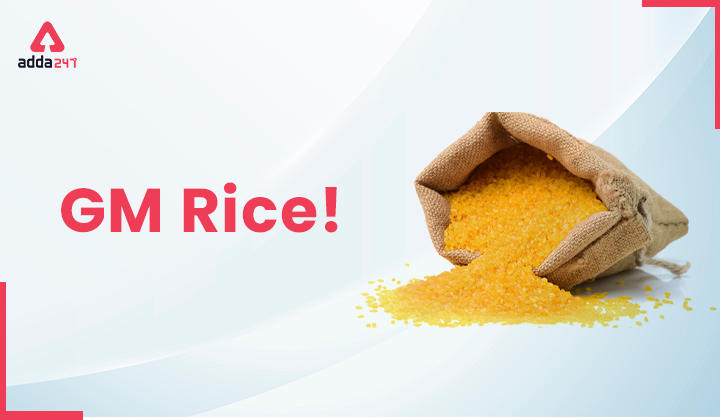G.S. Paper 3: Biotechnology, Food Security
Issue:
A French manufacturer of rice flour claimed it had found unauthorised genetically modified rice in a consignment of 500 tonnes of broken rice imported from India this June. Since the European Union does not permit any use of GM rice, manufacturers of confectionery items and baked goods which had used the rice flour were then forced to carry out a mass recall of products.
What is GM rice?
- GM foods are derived from plants whose genes are artificially modified, usually by inserting genetic material from another organism, in order to give it a new property, such as increased yield, tolerance to a herbicide, resistance to disease or drought, or to improve its nutritional value.
- Probably the best-known variety of GM rice is golden rice, which involves the insertion of genes from a plant — both daffodils and maize have been used — and a soil bacterium to create a grain that is enriched with Vitamin A.
Has India Approved GM Rice?
- India has approved the commercial cultivation of only one GM crop, Bt cotton.
- No GM food crop has ever been approved for commercial cultivation.
- However, confined field trials have been allowed for at least 20 GM crops.
- That includes varieties of GM rice which would have improved resistance to insects and diseases, as well as hybrid seed production and nutritional enhancements such as golden rice.
- Trials have been carried out by public universities and research institutions such as the Indian Agricultural Research Institute (IARI) and Tamil Nadu Agricultural University, as well as private firms such as Bayer Bioscience and Mahyco.
Was GM rice exported from India?
- The Commerce Ministry has said that as commercial cultivation of GM rice is banned, “there is no question of export of GM rice from India”.
- It said the EU was not sure of the exact source of the contaminant, adding that contamination could have occurred during the processing of the rice flour in Europe.
- Despite the outrage, it initiated an investigation by APEDA (Agriculture and Processed Food Products Export Development Authority).
What are the implications for Indian farmers?
- Farm and environmental activists allege that plants or seeds from the GM rice field trials could have contaminated non-GM crops, noting that illegal varieties of GM cotton and brinjal are freely circulating among sections of Indian farmers.
- India is the world’s top rice exporter, earning ₹65,000 crores last year by selling 18 million tonnes of grain, about a quarter of which is premium basmati. Among the 75 countries which buy Indian rice, West Asian nations, the U.S. and the U.K. are the biggest importers of basmati, while the majority of non-basmati rice goes to African countries and Nepal and Bangladesh.
- For Indian farmers, the nightmare scenario could be what happened in the U.S. in 2006, when trace amounts of a GM rice variety being tested by Bayer were found in shipments ready for exports.
- Trading partners such as Japan, Russia and the EU suspended rice imports from the U.S., hitting farmers hard and forcing Bayer to pay $750 million in damages.
- Under pressure from the rice export lobby at the time, India drafted policies to ban GM rice trials in the basmati belt.
What lies ahead?
- In the face of new advances in rice research, scientists and farmers say the regulatory regime needs to be strengthened for the sake of domestic and export consumers.



 TSPSC Group 1 Question Paper 2024, Downl...
TSPSC Group 1 Question Paper 2024, Downl...
 TSPSC Group 1 Answer key 2024 Out, Downl...
TSPSC Group 1 Answer key 2024 Out, Downl...
 UPSC Prelims 2024 Question Paper, Downlo...
UPSC Prelims 2024 Question Paper, Downlo...




